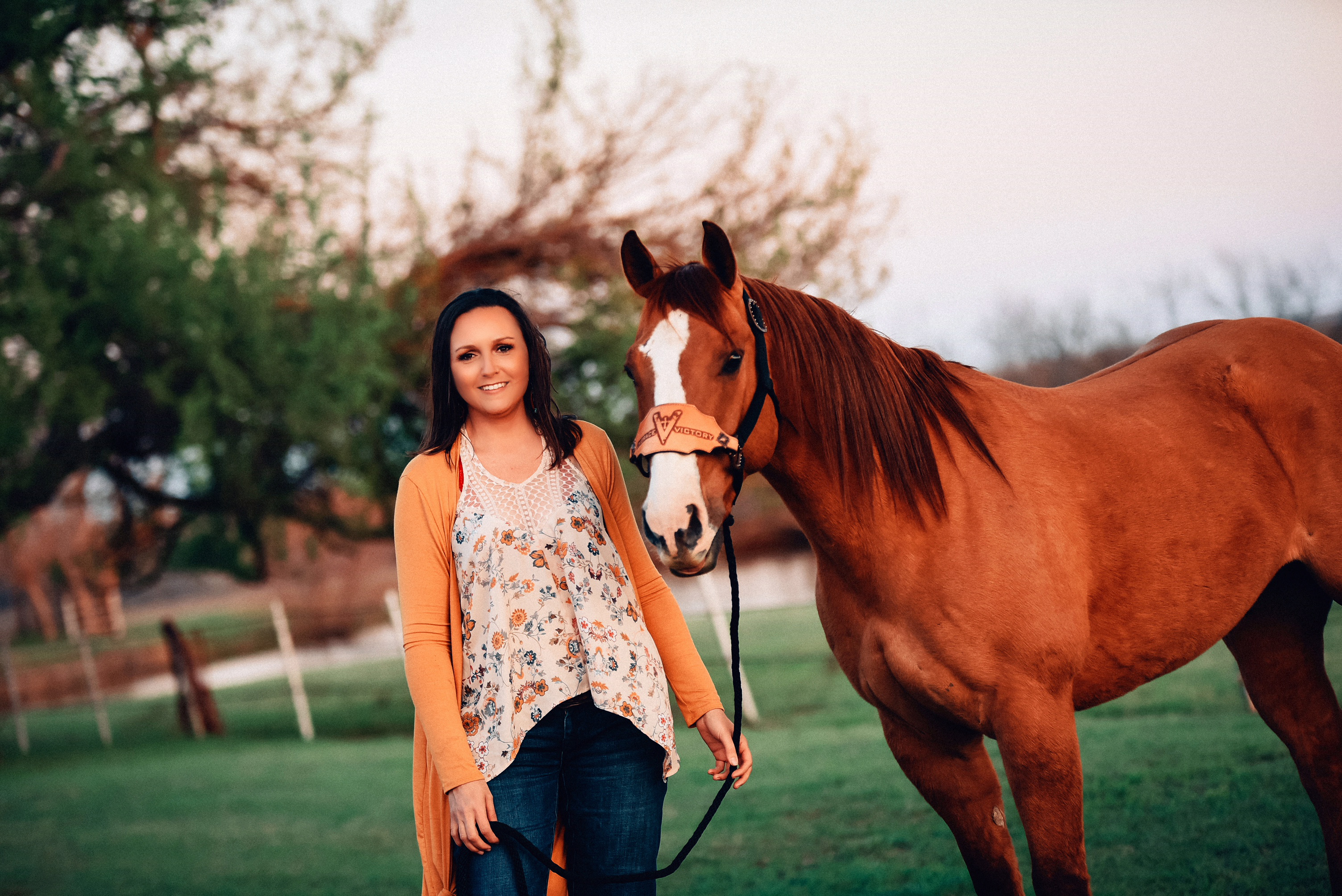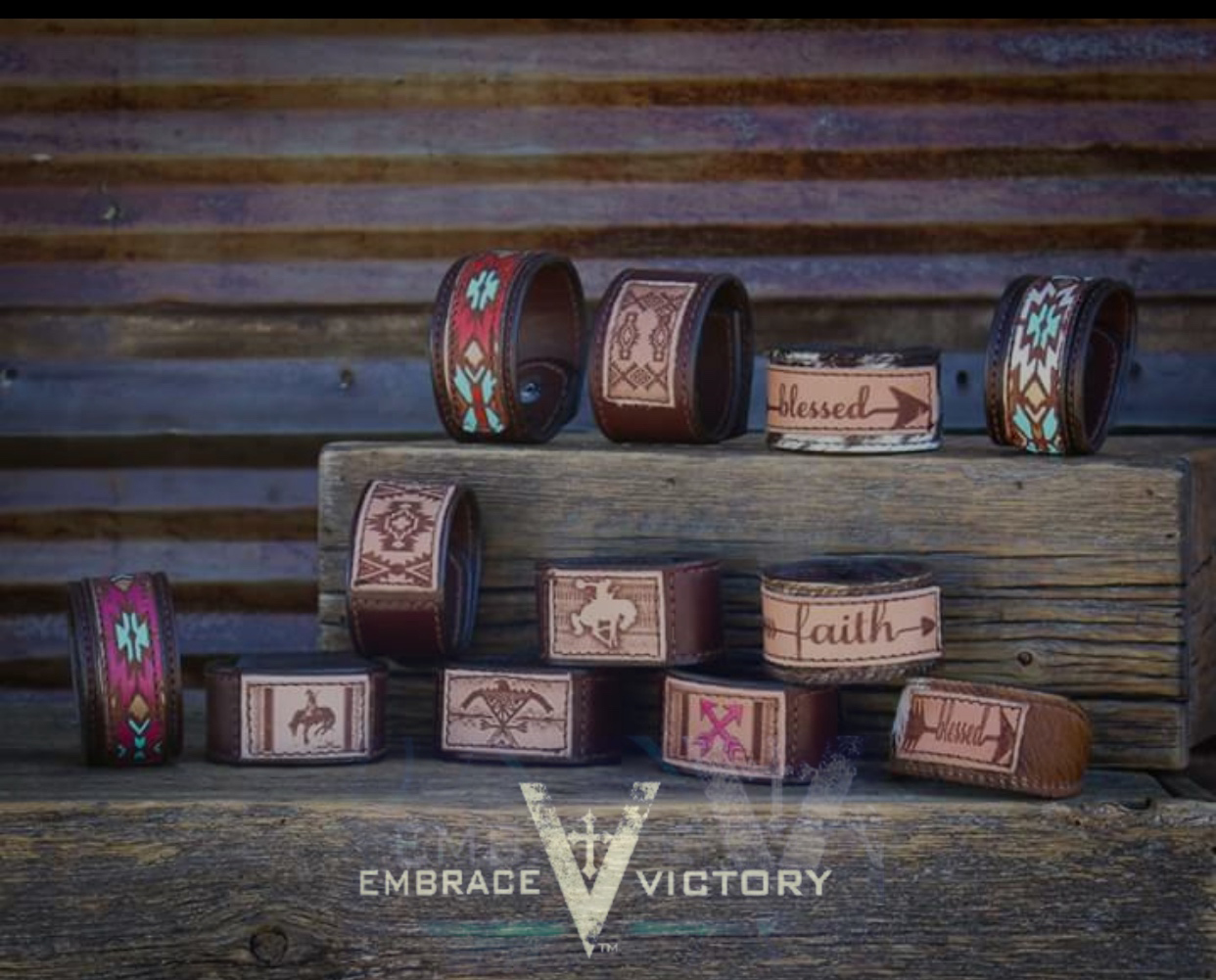Equine
Dream, Believe, Achieve — Embrace Victory

By Jessica Crabtree
Embracing her inner talent, Kristin Smith recognized everyone in her family had a unique ability. She even had a grandfather who whittled wood, the like that ended up on presidential tables. Having that in her blood, Smith’s trade was also made by the work of her hands. Raised in Pennsylvania in a rural setting on 150 acres, Smith and her brother grew interested in horses. With an initial introduction into pleasure horses, the family soon found roping was their passion. “No one else in my school rode horses, and we didn’t do sports once my parents bought us horses. In the summers we traveled back and forth to Texas a few times a year for new prospects,” Smith explained.
With a deep foundation in rodeo, Smith youth rodeoed and high school rodeoed, competing in barrel racing, pole bending, goat tying, team roping and breakaway roping, continuing as a young woman. Always having a flair for the out-of-the-ordinary, Smith was not afraid to express herself through her clothes, purses and personality. In 2005 Smith combined her passion and talent creating Kowgirl Glitz, with one-of-a-kind purses embellished with emu feathers and later blue-jean jackets adorned with cowhide and crystals. That same year the young woman purchased a laser machine. For the next three years Smith traveled across the country selling her Kowgirl Glitz items and rodeoing. “I remember taking my products wherever the rodeo was and hanging the purses or jackets on a panel, and between runs, selling them.”
The laser, a machine, simply burns the preferred design sent to the laser from the computer, made in a program, and within minutes the design appears on the leather. The same can be done on any surface or material. Smith has used the laser in the past on various sizes and forms of leather, cowhide, stamps and more.
To read more pick up a copy of the October 2018 NTFR issue. To subscribe call 940-872-5922.
Equine
The Cowboy Culture

By Phillip Kitts
The mystique and imagined glory of the rodeo road call many young people’s names. As they grow up, they watch the greats of the sport run from rodeo to rodeo and occasionally land on the television giving the perception of the rockstar lifestyle.
No, the glory of the rodeo road is not as grand as, say, the National Football League or the National Basketball Association, but being an athlete competing in front of the yellow chutes of Vegas is just as big a deal, and in every way, can be compared to competing in a Super Bowl.
However, things sure are different in the rodeo world. Let us take a minute and talk about what seem to be simple things in life that impact rodeo and rodeo athletes that in no way would make a difference to the big-money sports.
To read more, pick up a copy of the April issue of NTFR magazine. To subscribe by mail, call 940-872-5922.
Equine
The Danger of Lower Limb Wounds of Horses

By Garrett Metcalf, DVM
It is common for horse owners to have a horse with a wound or laceration at some point in their life. Sometimes small lacerations can be perceived as benign, inconsequential problems that do not need immediate veterinary attention and are managed by the owners or trainers initially. Unfortunately, these simple-looking wounds can involve very important anatomical structures that can lead to serious infections that can be life-threatening or, at best career-limiting, for the horse.
Large wounds tend to get all the attention from owners or trainers because when they occur they are so obvious and visually appalling that medical attention is sought almost immediately. Those types of large wounds can be devastating, but they often involve the upper body regions of the horse, which heal better and often don’t involve structures such as joints or tendons.
To read more, pick up a copy of the March issue of NTFR magazine. To subscribe by mail, call 940-872-5922.
Equine
A Rodeo Photographer’s Journey

By Phillip Kitts
Have you ever wondered what the rodeo looks like for contract personnel in the winter?
This month we will look at what the winter months look like from the rodeo photographer’s perspective.
To understand the time and demands that go into a career as a rodeo photographer, let’s start at when the season gets busy. Not all rodeo photographers work the same. There are many varieties in their career field. They can vary from the few weekends here and there to the full-timer who travels more than 30 weekends a year.
The full-timer that spends most of their year working usually hits the road in late winter. Yes, the winter months are slower but the photographer who has cemented themselves into the field usually books a few during late winter.
Rolling into the spring it begins to get busy. Depending on the photographer, spring can start with an every other weekend type schedule all the way to every weekend through the summer. In 2023 there were photographers that had 20-plus weeks straight going from rodeo to rodeo.
When late fall rolls in things begin to slow down, even for the go-getter who books everything they can.
To read more, pick up a copy of the March issue of NTFR magazine. To subscribe by mail, call 940-872-5922.
-

 Country Lifestyles1 year ago
Country Lifestyles1 year agoScott & Stacey Schumacher: A Growth Mindset
-

 Equine7 months ago
Equine7 months agoThe Will to Win
-

 Country Lifestyles7 years ago
Country Lifestyles7 years agoStyle Your Profile – What your style cowboy hat says about you and new trends in 2017
-

 Country Lifestyles4 years ago
Country Lifestyles4 years agoAmber Crawford, Breakaway Roper
-

 HOME7 years ago
HOME7 years agoGrazing North Texas – Wilman Lovegrass
-

 Country Lifestyles7 years ago
Country Lifestyles7 years agoDecember 2016 Profile, Rusty Riddle – The Riddle Way
-

 Country Lifestyles8 years ago
Country Lifestyles8 years agoJune 2016 Profile – The man behind the mic: Bob Tallman
-

 Country Lifestyles8 years ago
Country Lifestyles8 years agoCowboy Culture with Clay Reid – Being a Man











